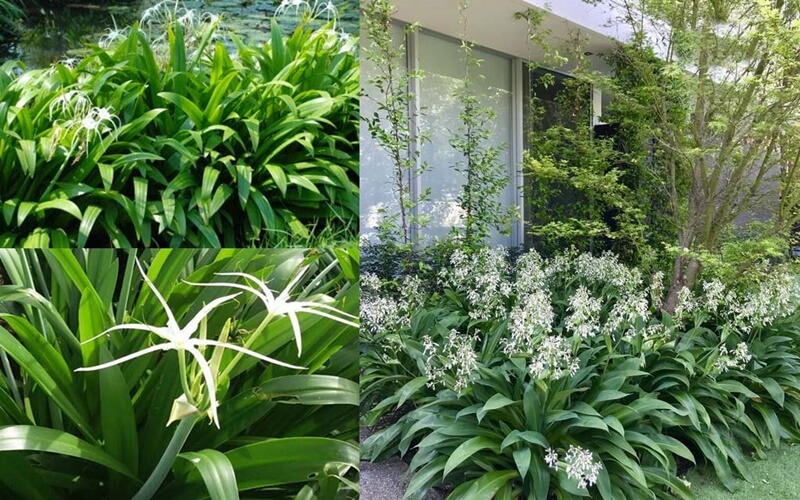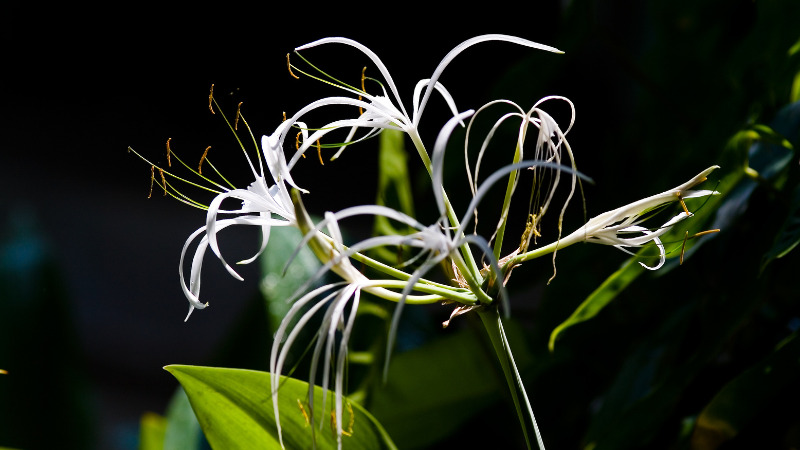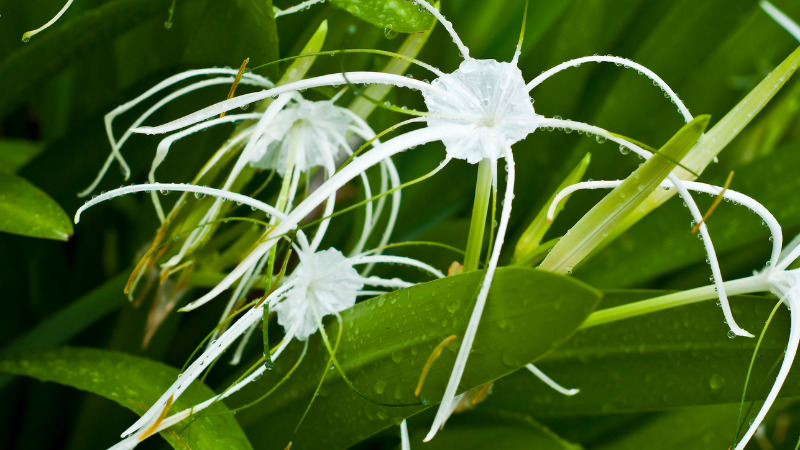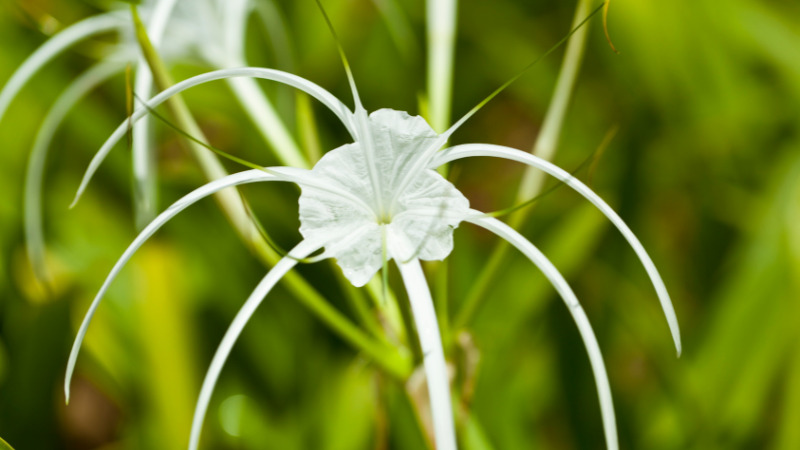The Hymenocallis Americana, or Beach Spider Lily, is a captivating plant that can add a touch of elegance to any urban landscape. Let’s delve into the details of this fascinating species.
1 What is the Beach Spider Lily?
Origin and Significance of the Beach Spider Lily
Native to the Americas, the Beach Spider Lily, scientifically known as Hymenocallis Americana Roem, belongs to the Amaryllidaceae family, earning it the common name Water Lily.
 All about the Beach Spider Lily.
All about the Beach Spider Lily.
Characteristics and Classification of the Beach Spider Lily
The Beach Spider Lily is a perennial herb with a large, spherical bulb. Its leaves are green and sword-shaped, growing directly from the bulb as the plant does not branch out. The flowers stand about 60-70 cm tall, with each stem bearing 4-8 blooms. Each flower boasts long green stamens with orange tips, emitting a subtle fragrance.
2 Benefits of the Beach Spider Lily
The Beach Spider Lily offers a host of advantages, most notably its aesthetic appeal as an ornamental plant. In addition to its beauty, this plant is a natural air purifier, capable of absorbing toxic gases and restoring freshness to the surroundings.
 The many benefits of the Beach Spider Lily.
The many benefits of the Beach Spider Lily.
The Beach Spider Lily is renowned for its robust constitution, prolific propagation, year-round white blossoms, and longevity. These attributes make it an ideal choice for planting beneath large trees or along roadsides to enhance the urban landscape. Even when not in bloom, its lush green foliage captures attention.
When paired with vibrant, colorful plants, the Beach Spider Lily can create a truly spectacular botanical display.
3 Planting and Caring for the Beach Spider Lily
 Caring for your Beach Spider Lily.
Caring for your Beach Spider Lily.
Planting the Beach Spider Lily at Home
Propagation: You can propagate the Beach Spider Lily through seed germination or by planting young saplings.
Soil Preparation: Prepare a well-aerated, moist, and nutrient-rich soil mix of clay, rice husk ash, coconut fiber, and cow manure.
Selecting Healthy Saplings: When planting, trim the leaves, leaving only 2-4 leaves per bulb.
Planting: Bury the bulbs about 5-7 cm deep in the soil, spacing each plant about 20 cm apart.
Watering: Provide adequate water to keep the soil moist and promote root growth.
Caring for the Beach Spider Lily
- Watering: As the Beach Spider Lily thrives in moist conditions and requires ample water, water the plant 2-3 times a week to ensure its vigorous growth.
- Light: Position the plant under large-canopied trees or in partially shaded areas, as it prefers dappled sunlight.
- Nutrition: Apply NPK fertilizer to the plant approximately three months after planting, preferably during cool, rainy weather, to facilitate the dissolution and even distribution of nutrients in the soil.
- Pruning and Pest Control: As with any plant, regular pruning and pest control are essential for the Beach Spider Lily’s holistic development and health.
Notes on Planting and Caring for the Beach Spider Lily
The Beach Spider Lily thrives in moist conditions, so water it regularly, about 2-3 times a week.
As it favors partial sunlight, place the plant in a shaded area or provide a canopy.
Apply fertilizer three months after planting to ensure optimal nutrient absorption and robust growth.
While the plant is generally resistant to pests, it is prone to root rot, so timely pruning and isolation of infected plants are crucial.
4 Captivating Captures of the Beach Spider Lily
 The beauty of the Beach Spider Lily.
The beauty of the Beach Spider Lily.
 Beach Spider Lilies create a serene atmosphere.
Beach Spider Lilies create a serene atmosphere.
 Beach Spider Lilies make a lovely border.
Beach Spider Lilies make a lovely border.
 Beach Spider Lilies add a touch of greenery.
Beach Spider Lilies add a touch of greenery.
 A profusion of Beach Spider Lily blossoms.
A profusion of Beach Spider Lily blossoms.
We hope this comprehensive guide to the Beach Spider Lily has provided you with valuable insights into the world of horticulture. Happy gardening!






































